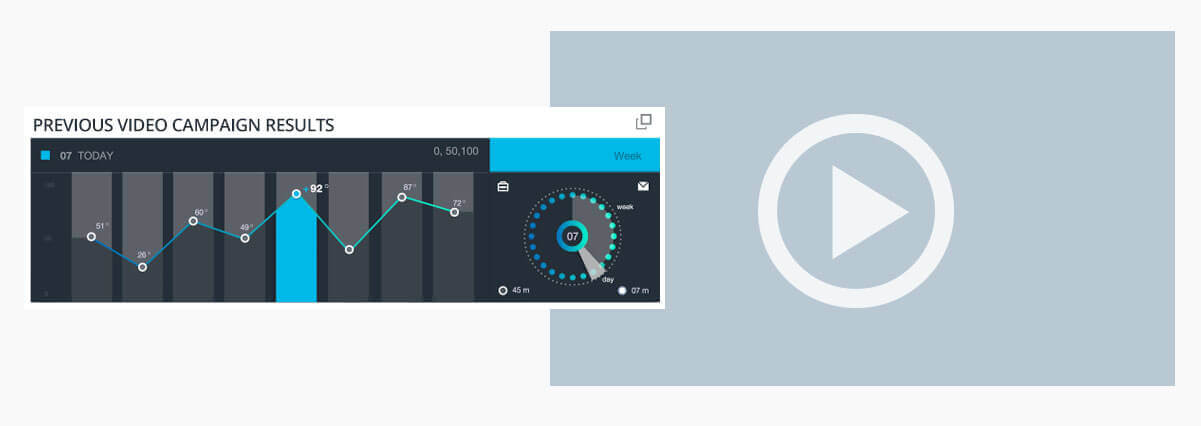Finding the Right Video Ads for the “New Broadcast”

Not too long ago, the biggest challenge to digital video advertising was the availability of pre-roll ad content—not viewability or third-party measurement metrics.
Two trends helped hasten the need for more digital video advertising:
- The pervasive and exponential growth of YouTube
- The influence of social media in driving traditional broadcast tune-in on Twitter and Facebook
While using existing broadcast-quality advertising is a start, there are certain pre-roll considerations to address. Some ads appear as pre-roll in a managed environment like YouTube. Others run only when within view, like on a mobile device. And increasingly, many are run without audio—until activation—within social feeds.
Moreover, the transition from the CPM (initiated ads) to CPV (shown only when viewed for a specific time metric) model has led to different considerations, requiring changes to existing creative and, often, various executions for the different platforms. Given that the dynamics of YouTube viewing are different than Facebook, for instance, creative needs to be optimized.

Don’t Discount Creative
It’s easy to overlook the value of the creative aspect of ads when making media buys, as the sales discussion often focuses on the rate itself, as well as selected KPIs. But a bad ad is a bad ad. Beyond that, many great broadcast ads don’t work as well online. Most important, for every bad ad, there’s someone who approved it. And none of us wants to be that person.
Over the course of the past several years helping execute video programs for brand and performance advertisers, AdParlor has developed a series of best practices that can increase the effectiveness of an ad, even if they have disparate KPIs.
While the best solution is to create a unique ad for every environment, budget and time typically restrict the ability to execute. More often than not, we’ll need to work with an existing ad. But this has several other advantages, including extending the investment of a produced and paid-for creative; reach/frequency alignment with other parts of the buy; as well as enhanced performance due to platform relevance.

Improving What You Already Have
Here are tips to enhance an existing video ad:
For YouTube: Most YouTube video ads are skippable, but users are less likely to skip an ad if they know what it’s for. The brand and, ideally, the offer should be clear in the first five seconds. Many broadcast ads, however, tell a narrative that ends with the brand or offer. You need to turn that upside down with digital video ads. The easiest way to do this is to add a logo/text overlay. (The labeling that YouTube provides helps, but the branding should occur within the creative video unit itself.)
For Facebook: Videos on the platform initially play without audio. That means that even if the content is eye-catching, users may not know what it’s about. Before running Facebook video ads, have a panel of co-workers watch the ad and ask them what they think it’s about. If they get it wrong, the ad needs to be reworked.
For Instagram: While the rules of Facebook also apply here, keep in mind that this particular social network is very visual. Think about the static image that appears before the video starts; is it interesting and captivating? Does it reflect the sophistication of the audience? Running broadcast pre-roll isn’t ideal. While custom creative isn’t always possible, consider adding a visual effect on the image and/or entire Instagram video ad itself.
For Twitter: Leverage the moment-in-time nature of Twitter. For instance, if you’re running Twitter advertising during a particular TV show, align with related Twitter content and use a Twitter-optimized ad. Both YouTube and Facebook best practices (see above) can work here in concert with the ad placement strategy.
Run multi-platform campaigns simultaneously: Audiences watch broadcast and use social networks at the same time. Many even utilize numerous social networks at the same time. Take advantage of that second (and third) screen viewing.
One more thing: consider the “happiness quotient” when running social video advertising. People engage with social media to feel good about themselves and their friends/followers. Does the ad make people happy? If it doesn’t, it probably isn’t ideal for social video programs.
But creative is only part of the story, with contextual targeting and audience definition playing key roles, as well. That’s very similar to broadcast, where buyers choose actual programs to run on, but pay on audience sizes. The alignment with the right audience with the right content at the right time is the ultimate goal.
Bottom Line
You can optimize your programs and demand high standards from your partners, but unless you’re optimizing your creative, you’ll hurt your results and risk alienating the prospects you’re looking to engage with.